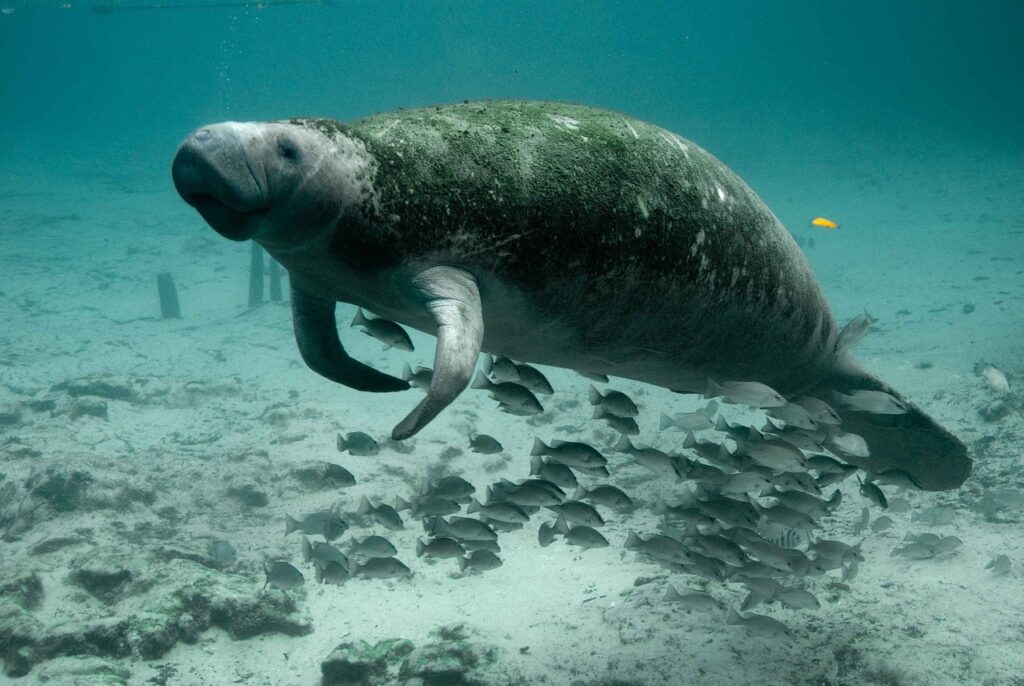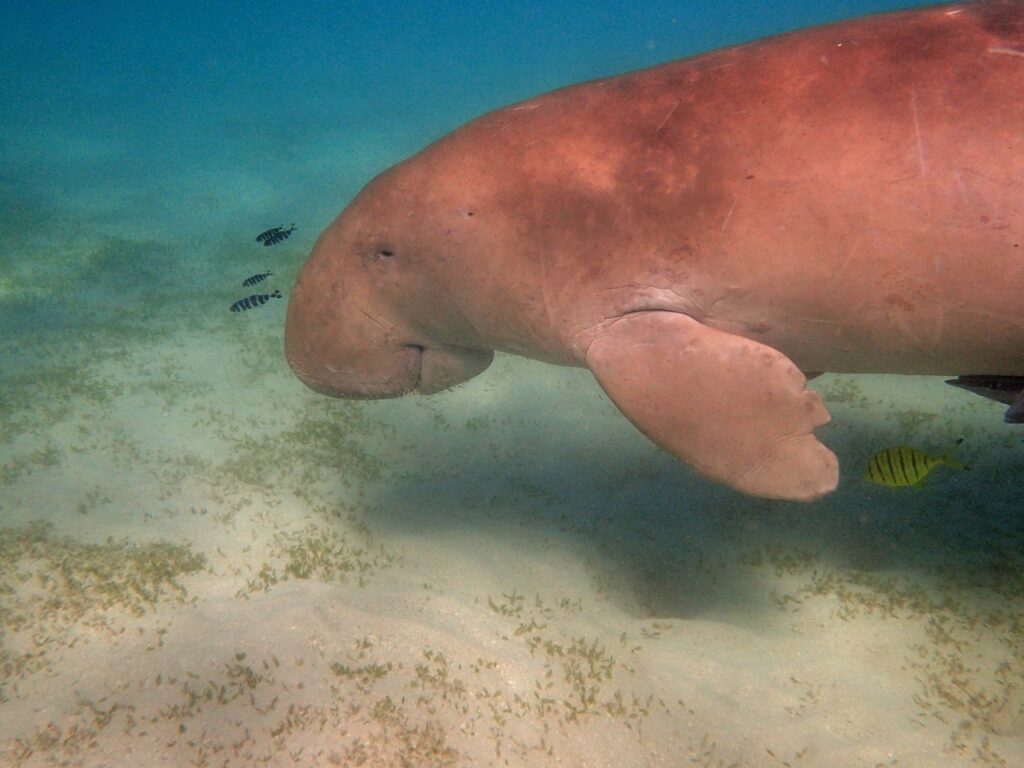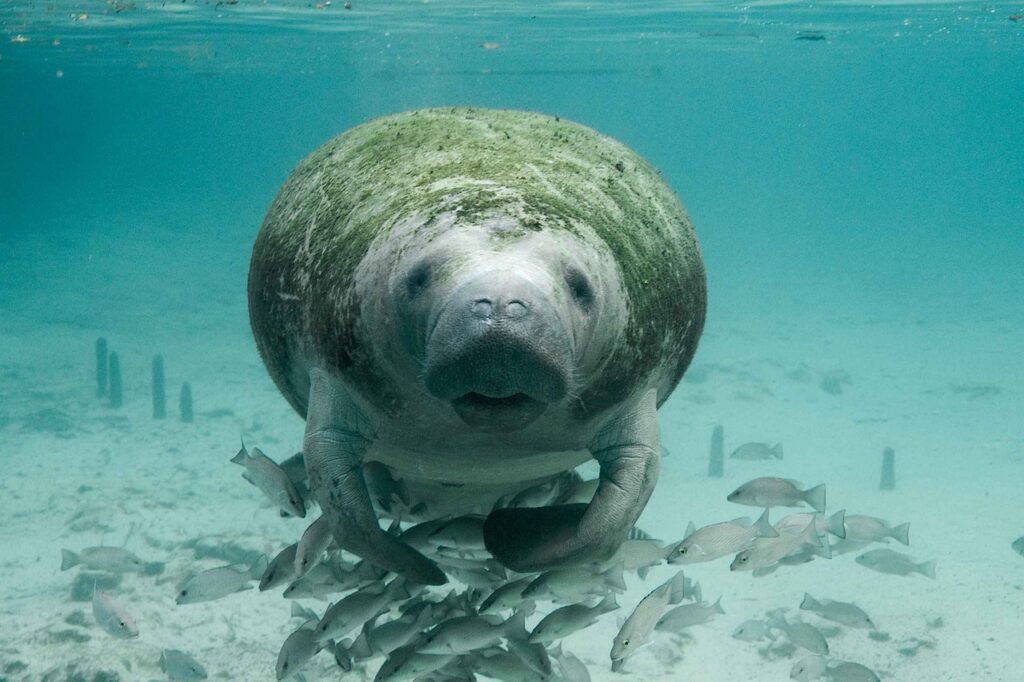Have you ever heard of the “mermaids of the sea”? Dugongs, also known as gentle giants of the ocean, have fascinated marine enthusiasts for centuries. These serene creatures glide gracefully through warm coastal waters, playing a vital role in marine ecosystems. But despite their charm, dugongs face numerous challenges that threaten their survival.
In this article, we’ll explore everything you need to know about dugongs—their unique characteristics, habitats, behaviors, and the urgent conservation efforts needed to protect them. If you’re passionate about marine life or simply curious about these enchanting animals, you’re in for an informative and engaging dive into the world of dugongs.

Table of Contents:
Conservation Efforts and How You Can Help
What Are Dugongs?
Dugongs vs. Manatees: Key Differences
Dugong Habitat and Distribution
The Role of Dugongs in Marine Ecosystems
Threats to Dugongs’ Survival
1. What Are Dugongs?
Dugongs (Dugong dugon) are marine mammals belonging to the order Sirenia, which also includes manatees. Known for their rounded snouts and streamlined bodies, they are often referred to as “sea cows” because of their diet, which primarily consists of seagrass.
Physical Features:
- Length: Typically 2.4 to 4 meters (7.9 to 13 feet).
- Weight: Up to 400 kilograms (880 pounds).
- Distinctive Traits: Paddle-like flippers and a fluked tail, similar to a dolphin’s.
Fun Fact: Dugongs are thought to have inspired ancient sailor tales about mermaids due to their human-like face and slow, graceful movements in the water.
2. Dugongs vs. Manatees: Key Differences
While dugongs and manatees share many similarities, they are distinct species.
| Feature | Dugongs | Manatees |
|---|---|---|
| Tail Shape | Fluked, similar to a dolphin. | Paddle-shaped. |
| Habitat | Coastal waters of the Indo-Pacific. | Freshwater rivers and estuaries (Caribbean and Americas). |
| Diet | Exclusively seagrass. | Seagrass and freshwater vegetation. |
Understanding these differences is crucial for conservation strategies tailored to their respective habitats.
3. Dugong Habitat and Distribution
Dugongs inhabit warm coastal waters in over 40 countries, from the eastern coast of Africa to Australia. They are most commonly found in regions with abundant seagrass beds, such as:
- The Great Barrier Reef, Australia.
- The Red Sea, Egypt and Sudan.
- Coastal waters of India and Southeast Asia.
Why Seagrass Matters
Seagrass is the dugong’s primary food source and supports other marine life, including fish and crustaceans. Healthy seagrass ecosystems are essential for marine biodiversity and carbon storage.

4. The Role of Dugongs in Marine Ecosystems
Dugongs are considered “ecosystem engineers.” By grazing on seagrass beds, they help maintain the health and growth of these underwater meadows.
Key Benefits:
- Seagrass Regeneration: Their feeding habits stimulate new growth.
- Biodiversity Support: Seagrass beds provide habitats for many marine species.
- Carbon Sequestration: Seagrass stores large amounts of carbon, combating climate change.
Example: Research shows areas frequented by dugongs exhibit healthier and more productive seagrass ecosystems than those without.
5. Threats to Dugongs’ Survival
Despite their ecological importance, dugongs face numerous threats that have led to a decline in their population.
Human-Driven Threats:
- Habitat Destruction: Coastal development and pollution damage seagrass beds.
- Bycatch: Dugongs often get caught in fishing nets.
- Boat Collisions: Their slow movements make them vulnerable to boat strikes.
Natural Challenges:
- Climate change affects seagrass growth due to rising sea temperatures and ocean acidification.
Example (Wrong Approach): Ignoring the need for marine protected areas has led to drastic habitat loss.
Example (Right Approach): Establishing no-fishing zones has significantly reduced bycatch in regions like Australia.
6. Conservation Efforts and How You Can Help
To save dugongs from extinction, global and local conservation efforts are critical.
Ongoing Initiatives:
- Marine Protected Areas (MPAs): Countries like Australia have designated MPAs to safeguard dugong habitats.
- Community Engagement: Educating coastal communities about sustainable fishing practices.
- Seagrass Restoration Projects: Replanting damaged seagrass beds.
How You Can Help:
- Support Organizations: Donate to groups like the Dugong and Seagrass Conservation Project.
- Reduce Pollution: Use eco-friendly products to minimize runoff into oceans.
- Raise Awareness: Share information about dugongs on social media to inspire others.
Together, we can ensure that dugongs continue to thrive. Start by supporting seagrass restoration projects or volunteering with local conservation groups.

Conclusion:
Dugongs are more than just fascinating marine mammals—they are vital players in maintaining healthy marine ecosystems. However, their survival is at risk due to human activity and environmental changes.
By understanding their role in the ocean and supporting conservation efforts, we can help protect these gentle giants for future generations. Let’s make a difference—one seagrass bed at a time.
Bring home the cuddliest companion you’ll ever own – Click here to meet your new favorite stuffed animal – Dugong!